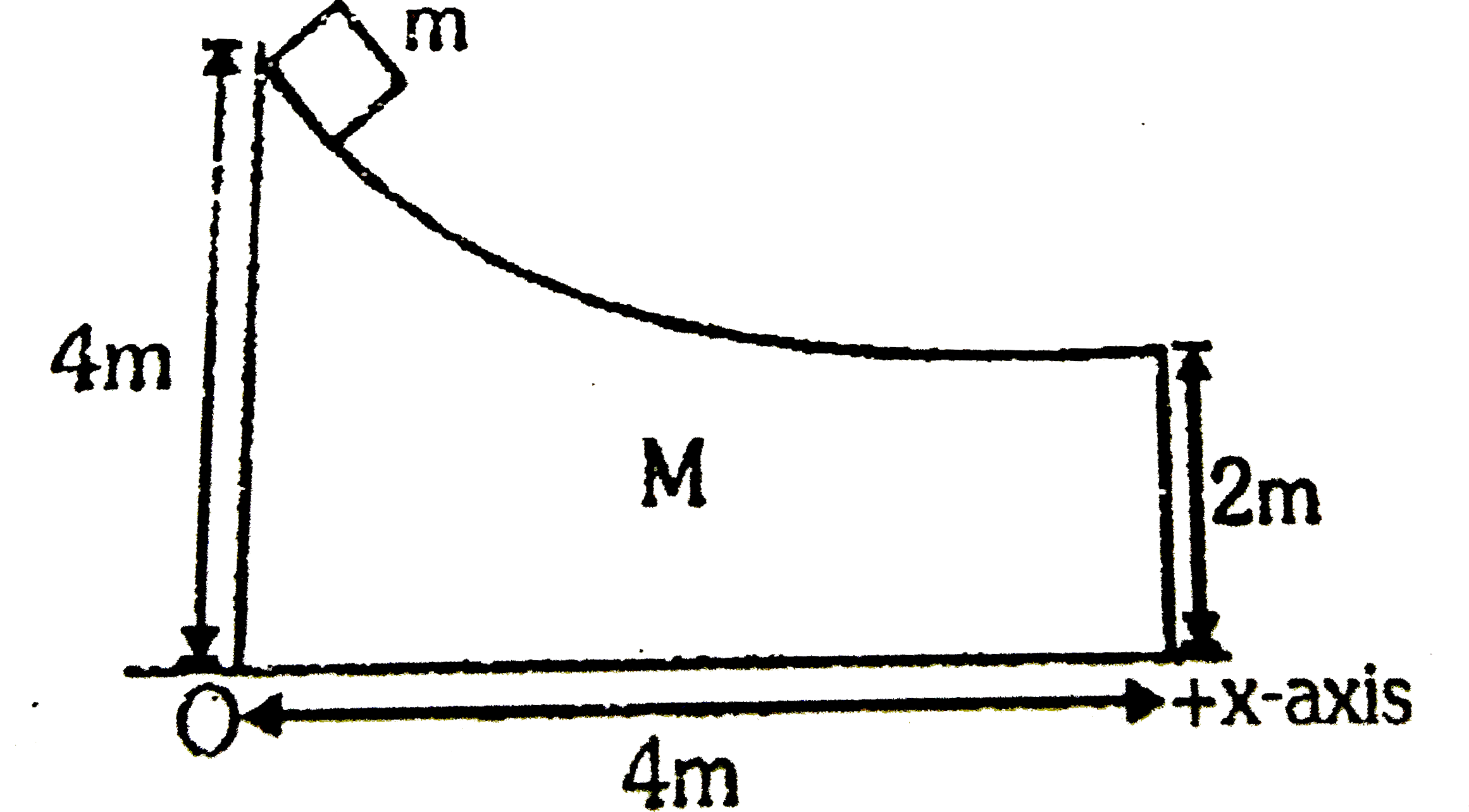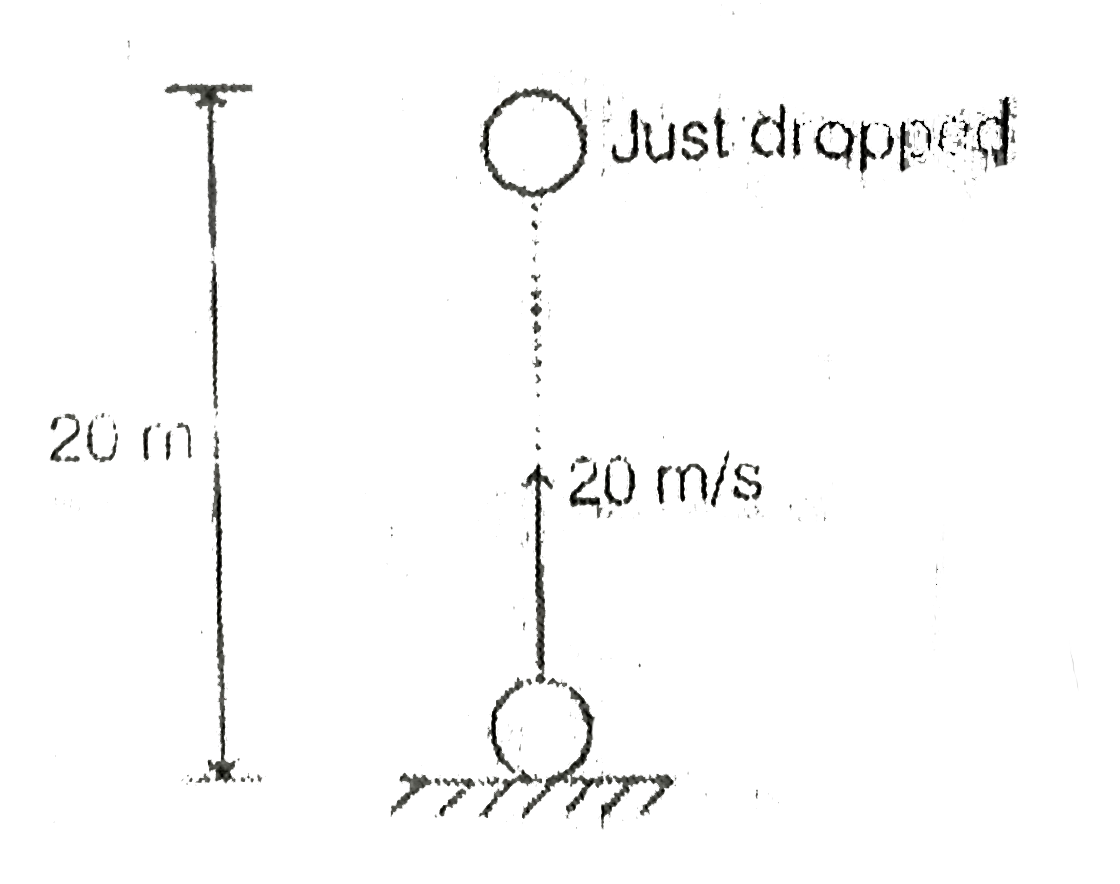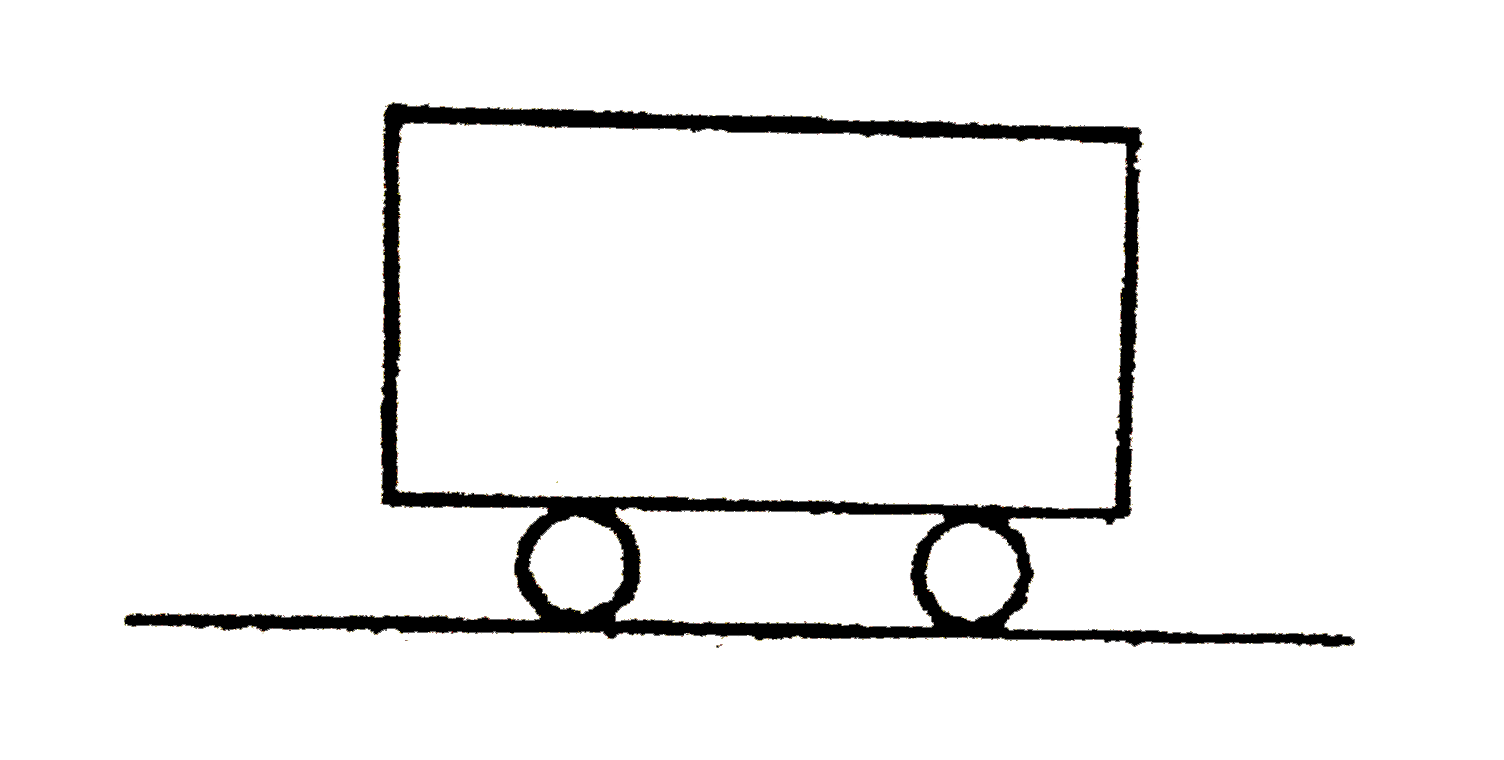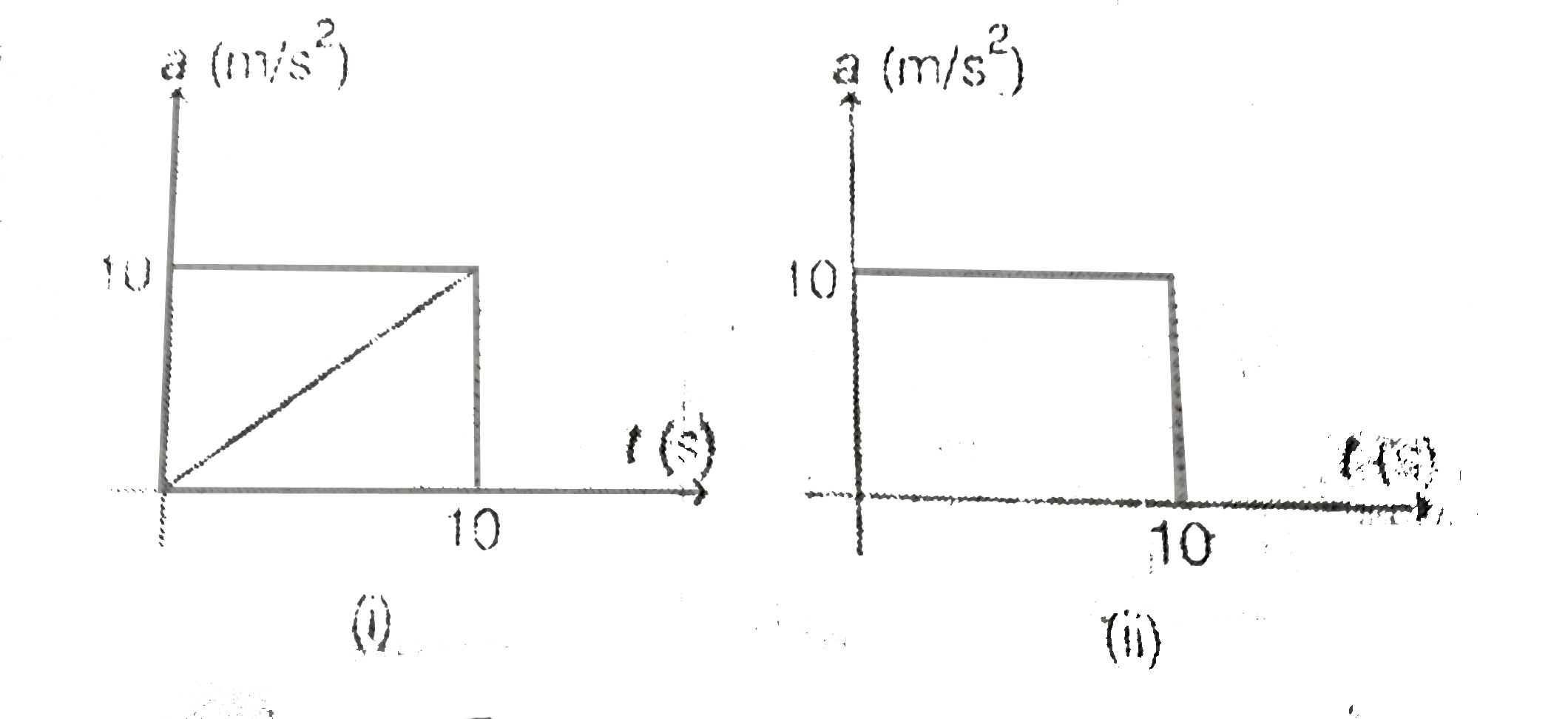Complete Solutions to Comprehension type questions of chapter CENTRE OF MASS, IMPULSE AND MOMENTUM of Class 11 book with complete answers and questions
| Class 11 | PHYSICS |
| Chapter | CENTRE OF MASS, IMPULSE AND MOMENTUM |
| DC PANDEY MASTER PROBLEM PACKAGE | Comprehension type questions |
| Number Of Questions | 15 |
| Academic Year | 2023-24 |
Comprehension # 1
If net force on a system in a particular direction is zero (say in horizontal direction), we can apply: `Sigmam_(R )x_(R )= Sigmam_(L)x_(L)`,` Sigmam_(R )v_(R )= Sigmam_(L)v_(L)` and `Sigmam_(R )a_(R ) = Sigmam_(L)a_(L)`
Here `R` stands for the masses which are moving towards right and `L` for the masses towards left, `x` is displacement, `v` is velocity and `a` the acceleration (all with respect to ground).
A small block of mass `m = 1 kg` is placed over a wedge of mass `M = 4 kg` as shown in figure. Mass `m` is released from rest. All surface are smooth. Origin O is as shown.

Final velocity of the wedge is ..........`m//s` :-21:10View SolutionComprehension # 1
If net force on a system in a particular direction is zero (say in horizontal direction), we can apply: `Sigmam_(R )x_(R )= Sigmam_(L)x_(L)`,` Sigmam_(R )v_(R )= Sigmam_(L)v_(L)` and `Sigmam_(R )a_(R ) = Sigmam_(L)a_(L)`
Here `R` stands for the masses which are moving towards right and `L` for the masses towards left, `x` is displacement, `v` is velocity and `a` the acceleration (all with respect to ground).
A small block of mass `m = 1 kg` is placed over a wedge of mass `M = 4 kg` as shown in figure. Mass `m` is released from rest. All surface are smooth. Origin O is as shown.

The block will strike the x-axis at `x =` ............ `m` :-21:10View SolutionComprehension # 1
If net force on a system in a particular direction is zero (say in horizontal direction), we can apply: `Sigmam_(R )x_(R )= Sigmam_(L)x_(L)`,` Sigmam_(R )v_(R )= Sigmam_(L)v_(L)` and `Sigmam_(R )a_(R ) = Sigmam_(L)a_(L)`
Here `R` stands for the masses which are moving towards right and `L` for the masses towards left, `x` is displacement, `v` is velocity and `a` the acceleration (all with respect to ground).
A small block of mass `m = 1 kg` is placed over a wedge of mass `M = 4 kg` as shown in figure. Mass `m` is released from rest. All surface are smooth. Origin O is as shown.

Normal reaction between the two blocks at an instant when absolute acceleration of `m` is `5 sqrt3 m//s^(2)` at `60^(@)` with horizontal is ......... N. Normal reaction at this instant is making `30^(@)` with horizontal.21:10View SolutionComprehension # 1
If net force on a system in a particular direction is zero (say in horizontal direction) we can apply:
`Sigmam_(R )x_(R )= Sigmam_(L)x_(L), Sigmam_(R )v_(R )= Sigmam_(L)v_(L)` and `Sigmam_(R )a_(R ) = Sigmam_(L)a_(L)`
Here R stands for the masses which are moving towards right and L for the masses towards left, x is displacement, v is velocity and a the acceleration (all with respect to ground). A small block of mass `m = 1 kg` is placed over a wedge of mass `M = 4 kg` as shown in figure. Mass m is released from rest. All surface are smooth. Origin O is as shown.

At the same instant reaction on the wedge from the ground is ........N.21:10View SolutionComprehension # 2
When two bodies collide normally they exert equal and opposite impulses on each other. Impulse `=` change in linear momentum. Coefficient of restitution between two bodies is given by :- `e = |"Relative velocity of separation"|/|"Relative velocity of approach"| = 1`, for elastic collision.

Two bodies collide as shown in figure. During collision they exert impulse of magnitude `J` on each other.
If the collision is elastic, the value of `J` is ............. `Ns`.09:40View SolutionComprehension # 2
When two bodies collide normally they exert equal and opposite impulses on each other. Impulse `=` change in linear momentum. Coefficient of restitution between two bodies is given by :-
`e = |"Relative velocity of separation"|/|"Relative velocity of approach"| = 1`, for elastic collision

Two bodies collide as shown in figure. During collision they exert impulse of magnitude J on each other.
For what value of `J` (in `Ns` ) the `2 kg` block will change its direction of velocity?09:40View SolutionTwo identiacal masses are as shown in figure. One is thrown upwards with velocity 20 m/s and another is just dropped simultaneously.
The masses collide I air and stick together. After how much time the combined mass will fall to the gorund (calculate the time from the starting when the motion was started )
 08:34View Solution
08:34View SolutionTwo identiacal masses are as shown in figure. One is thrown upwards with velocity 20 m/s and another is just dropped simultaneously.
In the above problem, to what maximum height (from ground) with the combined mass rise ?08:34View SolutionTwo identiacal masses are as shown in figure. One is thrown upwards with velocity 20 m/s and another is just dropped simultaneously.
If the collision between them is elastic, find the time interval between their striking with ground 08:34View Solution
08:34View SolutionComprehension # 4
When the mass of a system is variable, a thrust force has to be applied on it in addition to all other forces acting on it. This thrust force is given by : `vec(F) = vec(v)_(r) (+- (dm)/(dt))`. Here `vec(v)_(r)` is the relative velocity with which the mass `dm` either enters or leaves the system.

A car has total mass `50 kg`. Gases are ejected from its backwards with relative velocity `20 m//s`. The rate of ejection of gas is `2 kg//s`. Total mass of gas is `20 kg`. Coefficient of friction between the car and road is `mu = 0.1`.
Car will start moving after time `t = ......... s`.23:03View SolutionComprehension # 4
When the mass of a system is variable, a thrust force has to be applied on it in addition to all other forces acting on it. This thrust force is given by : `vec(F) = vec(v)_(r) (+- (dm)/(dt))`. Here `vec(v)_(r)` is the relative velocity with which the mass `dm` either enters or leaves the system.

A car has total mass `50 kg`. Gases are ejected from its backwards with relative velocity `20 m//s`. The rate of ejection of gas is `2 kg//s`. Total mass of gas is `20 kg`. Coefficient of friction between the car and road is `mu = 0.1`.
Maximum speed of car will be `v = ....... m//s` :- (Take `ln ((4)/(3)) = 0.28` )23:03View SolutionComprehension # 4
When the mass of a system is variable, a thrust force has to be applied on it in addition to all other forces acting on it. This thrust force is given by : `vec(F) = vec(v)_(r) (+- (dm)/(dt))`. Here `vec(v)_(r)` is the relative velocity with which the mass `dm` either enters or leaves the system.

A car has total mass `50 kg`. Gases are ejected from its backwards with relative velocity `20 m//s`. The rate of ejection of gas is `2 kg//s`. Total mass of gas is `20 kg`. Coefficient of friction between the car and road is `mu = 0.1`.
Car will stop after (from starting) `t = ........... s`.23:03View SolutionAcceleration of two identical particles moving in a straight line are as shown in figure.

The corresponding a-t graph of their centre of mass will be01:39View SolutionAcceleration of two identical particles moving in a straight line are as shown in figure.

If initial velocity of both the particles was zero. Then velocity of their centre of mass after 10 s will be01:47View SolutionComprehension # 5
One particle of mass `1 kg` is moving along positive x-axis with velocity `3 m//s`. Another particle of mass `2 kg` is moving along y-axis with `6 m//s`. At time `t = 0, 1 kg` mass is at `(3m, 0)` and `2 kg` at `(0, 9m), x - y` plane is the horizontal plane. (Surface is smooth for question 1 and rough for question 2 and 3)
The centre of mass of the two particles is moving in a straight line for which equation is :17:14View Solution
Comprehension type questions questions and complete solutions for chapter CENTRE OF MASS, IMPULSE AND MOMENTUM of DC PANDEY PHYSICS (HINGLISH) of Class 11
